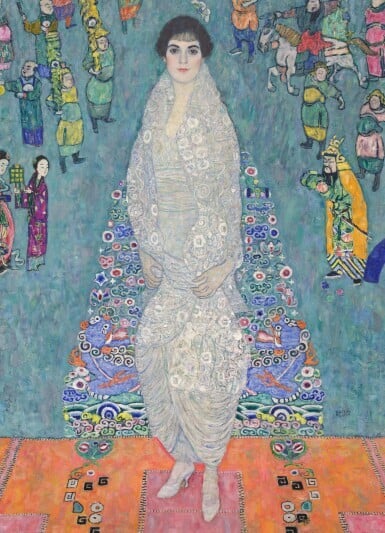Sotheby’s Brings Picasso Ceramics to London
Spanish painter, sculptor, printmaker, ceramist, and stage designer, Pablo Picasso could easily be regarded as the most influential artist of the 20th century. Extremely prolific, he has changed the history of art, his pictorial work holding iconic status. Picasso’s artistic eclecticism is evident in his openness to a broad range of styles, subject matters and his ability to combine multiple sources and mediums.
Such is the case with his ceramic works, which mark a highly creative period in his life during the time spent in the South of France. Driven by boundless artistic energies and ambitions, Picasso created numerous ceramics between 1947 and 1971, and the full extent of his works remain mostly unknown to the general public. The master of Cubism produced signature clay works that are increasingly gaining fame and carry undisputed value. On the art market, Picasso ceramics enjoy a resurgence, partly because they remain the most affordable in his vast work repertoire. Often put up for auction, they sell for more than ten times the pre-sale estimate, like in the case of Grand vase aux femmes voilées, which fetched $1,145,407 in 2012.
.png?width=863&height=690&name=unnamed%20(3).png)
Picasso London Auction
Sotheby’s London will host its annual Picasso Ceramics auction in June 2025, with bidding open from 20–27 June. This much-anticipated event offers fresh insight into Picasso’s playful, bold, and inventive ceramic works, many of which were created during his years in Vallauris, South of France, in collaboration with the Madoura Pottery studio. Over the course of two decades, Picasso produced more than 3,500 ceramic pieces, from plates and pitchers to sculptural vases and jugs. These works reveal classical motifs, animal forms, and expressive faces, often carrying a light, humorous touch.
Determining the value of a Picasso ceramic piece without expert appraisal and guidance can be difficult, as prices can vary from a few thousand dollars to a million. Sotheby’s offers online estimates and in-person valuations, establishing an item’s condition and authenticity to determine its value. A large number of Picasso’s ceramics were produced in the 50s and 60s, with prices of around 100 dollars a piece, at the time. He always wanted to make his art form more accessible to the general public, at least seventy years ago.
The collection coming to London this June presents an evocative cross-section of his ceramic art and highlights singular pieces that reflect one of the most creative chapters of his career.
Picasso’s Years in Clay: A Match Made in Madoura Pottery
A match made in South of France, Picasso’s creative partnership with Madoura studio in Vallauris began in 1947 and would last until the artist died in 1973. No stranger to ceramic art, Picasso experimented with clay some 40 years earlier, but meeting Georges and Suzanne Ramié, the owners of the Madoura Pottery studio, greatly captured his interest, so he decided to come back to their workshop and start working at Madoura daily. The Ramiés welcomed Picasso and shared with him secrets about firing the clay and painting the glaze, inspiring him to reclaim the art of pottery. What followed was the completion of over 1,000 unique ceramic pieces between 1947 and 1948, for which the artist drew inspiration from light and Mediterranean nature.
Sketches in hand and his head brimming with ideas, Picasso delved into the exploration of shapes, colours, and the transformative nature of the firing process. He initially worked with simple plates and bowls and later expanded his compositions to include pitchers and vases.
Picasso Expressions in Clay
For Picasso, ceramics was almost a spiritual retreat from the worries and demands of painting. Working with primal elements like earth and fire not only agreed with him but also produced magical results. Over the course of two decades, he created more than 3,500 works fired in clay, including plates, jugs, vases, and pitchers that abound with mythological imagery, zoomorphic designs, whimsical faces, and explorations of the human figure.
Picasso’s ceramics were shaped by his interest in traditional Spanish pottery, where decoration mattered more than perfect form or fine materials. He often returned to familiar themes: bullfights, roosters, suns, human faces, all of which carried a personal visual language that translated well to clay. Painting on a three-dimensional surface gave Picasso space to explore different facets of cubism and work with shape and volume to guide the composition and create unique effects. As he became more confident, Picasso expanded his creations and crafted three-dimensional motifs on many of his ceramics. The playful nature of his works in Vallauris is palpable throughout, a clear nod to the time they were conceived – a happier, more optimistic period in the artist’s life post the doom and gloom of World War II.
Picasso’s fascination with the human face and its expressions, moods and shifting angles always ran deep throughout his works, and it often appears in his ceramics as well.
He treated the subject matter with the same fervour and freedom that shaped his paintings, using clay as a means to explore emotion and identity. One piece that remarkably captures this theme is Visage aux yeux rieurs (Laughing-eyed Face), 1969, where Picasso transformed a simple turned pitcher into a vivid portrait. The face is brought to life through bold lines and a layered palette, using form and colour in tandem to create a sense of animation and play.
Final Note
The Picasso Ceramic auction offers a unique glimpse into the creative vision and experimental nature of the artist’s practice, and how his choice of form and glaze got refined over time.
Recognised for their abstracted patterns, symbols, and figurations, Picasso’s ceramics reflect the course of human life. Through clay, fire and pot, the artist expressed the eternal polarity between mortals and immortals, between life and death.



